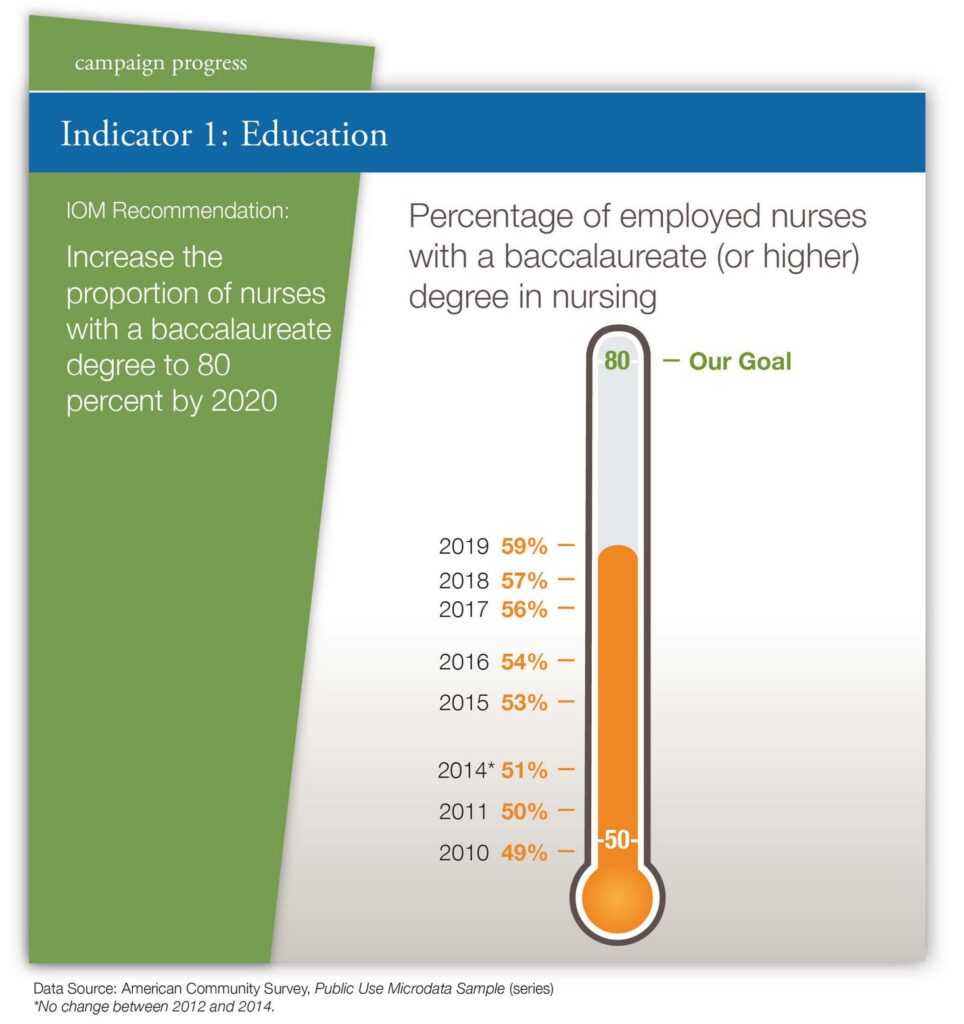
Atul Gupta and Catherine Ishitani Win 2025 NIHCM Research Award
Cited for “Breaking New Ground” in the Field of Hospital Operations
Blog Post
Ongoing media coverage of the COVID-19 pandemic gives us a glimpse into the complex and life-saving care provided by nurses. Many critically ill COVID-19 patients are in medically induced comas and totally dependent upon nurses for their lives. Other hospitalized patients recovering from surgery or a heart attack likewise depend on nurses to keep them safe and to be first responders in case of emergencies. Given the complexity of modern-day care, it should come as no surprise that a better-educated nurse workforce is associated with better patient outcomes.

Over the past two decades, a substantial body of research in the U.S. and abroad has documented that hospitals with a higher proportion of registered nurses with a bachelor’s degree in nursing (BSN) experience significantly fewer deaths, have shorter hospital stays and fewer readmissions, and have lower Medicare expenditures per patient. Patients who experience a cardiac arrest in hospitals with a greater proportion of nurses with bachelor’s degrees in nursing are more likely to survive and go home. A landmark report by the National Academy of Medicine (NAM) in 2010 recommended that the U.S. move to a nurse workforce in which at least 80% of nurses were qualified at the bachelor’s level or higher by 2020. But in 2019, just 59% of all employed nurses held at least a bachelor’s degree, with the rest holding an associate degree or diploma as their highest educational credential in nursing.
Hospital employers, led by their nurse executives, deserve credit for prioritizing bachelor’s qualifications in their hiring policies and providing educational benefits to RNs to obtain higher educational qualifications. New York State passed legislation (“BSN in 10”) requiring RNs to obtain a bachelor’s degree within 10 years of licensure to continue to practice within the state. About 130,000 nurses at any one time are working on advancing to a bachelor’s or higher degree.
The RN-BSN pathway is essential for meeting the NAM goal of 80% bachelor’s qualified nurses in the near term. However, the foundation of the NAM recommendation of 80% BSNs was based on research of hospital outcomes in which most nurses with BSNs had obtained them from 4-year colleges and universities as their first nursing qualification. Would the positive outcomes hold true for nurses who pursued different educational pathways to the BSN, including, for example, RN to BSN completion programs or the increasingly popular option of people with bachelor’s degrees in other fields obtaining BSNs in expedited shortened programs?
Our recently published study of 510 hospitals and 20,268 practicing nurses is the first to answer this important question. We found that hospitals with a larger proportion of nurses with BSN qualifications have significantly lower risk-adjusted mortality for surgical patients, regardless of the specific pathway nurses take to earn a bachelor’s degree in nursing. In other words, it does not matter whether nurses obtain their BSN through a traditional 4-year program at a college or university or an RN to baccalaureate completion program; all paths leading to a largely bachelor’s qualified hospital nurse workforce contribute to better patient outcomes.
Specifically, we found that every 10% increase in the proportion of BSN nurses in a hospital resulted in a 5.5% decrease in surgical patient mortality. This means that hospitals with 80% of the nursing staff holding a BSN by any pathway have mortality rates about 25% lower than hospitals with 30% of their nurses with BSN qualifications.
Our study findings also have implications for access to education and diversity of the BSN workforce. Baccalaureate completion programs are often thought to enhance access to BSN education and promote diversity among BSN nurses. Ethnic and racial minority nurses are less likely to obtain a BSN through a 4-year program but are slightly more likely to obtain a BSN or higher at some point in their career via baccalaureate completion pathways. As such, besides contributing to more BSN nurses in the workforce, maintaining multiple pathways to the BSN may also contribute to BSN workforce diversity and potentially to reducing health disparities.
Our study provides the first empirical evidence indicating that the 80% BSN goal and better patient outcomes can be met by increases in BSN nurses educated through both traditional 4-year and baccalaureate completion pathways. These study results are positive news for hospital employers and the nursing profession aiming to transition to a primarily BSN-prepared workforce. While graduations from BSN programs in 4-year colleges and universities are growing slowly, trends suggest that these programs will not be able to expand enough to meet the target of a largely BSN nurse workforce. Our results suggest that alternative pathways to the BSN can and should play an important role in achieving the NAM target of 80% BSN nurses within the next decade.
The study, Variations in nursing baccalaureate education and 30-day inpatient surgical mortality, was published in Nursing Outlook on November 8, 2021. Authors include Joshua Porat-Dahlerbruch, Linda H. Aiken, Karen B. Lasater, Douglas M. Sloane, and Matthew D. McHugh.



Cited for “Breaking New Ground” in the Field of Hospital Operations

Men are Stepping Up at Home, but Caregiving Still Falls On Women and People of Color LDI Fellow Says

More Flexible Methadone Take-Home Policy Improved Patient Autonomy

Penn LDI Seminar Details How Administrative Barriers, Subsidy Rollbacks, and Work Requirements Will Block Life-Saving Care

His data-driven initiatives risk violating consent, spreading stigma, and reviving vaccine misinformation, LDI Fellow writes.

Top Experts Warn of Devastating Impact on Community Safety Efforts